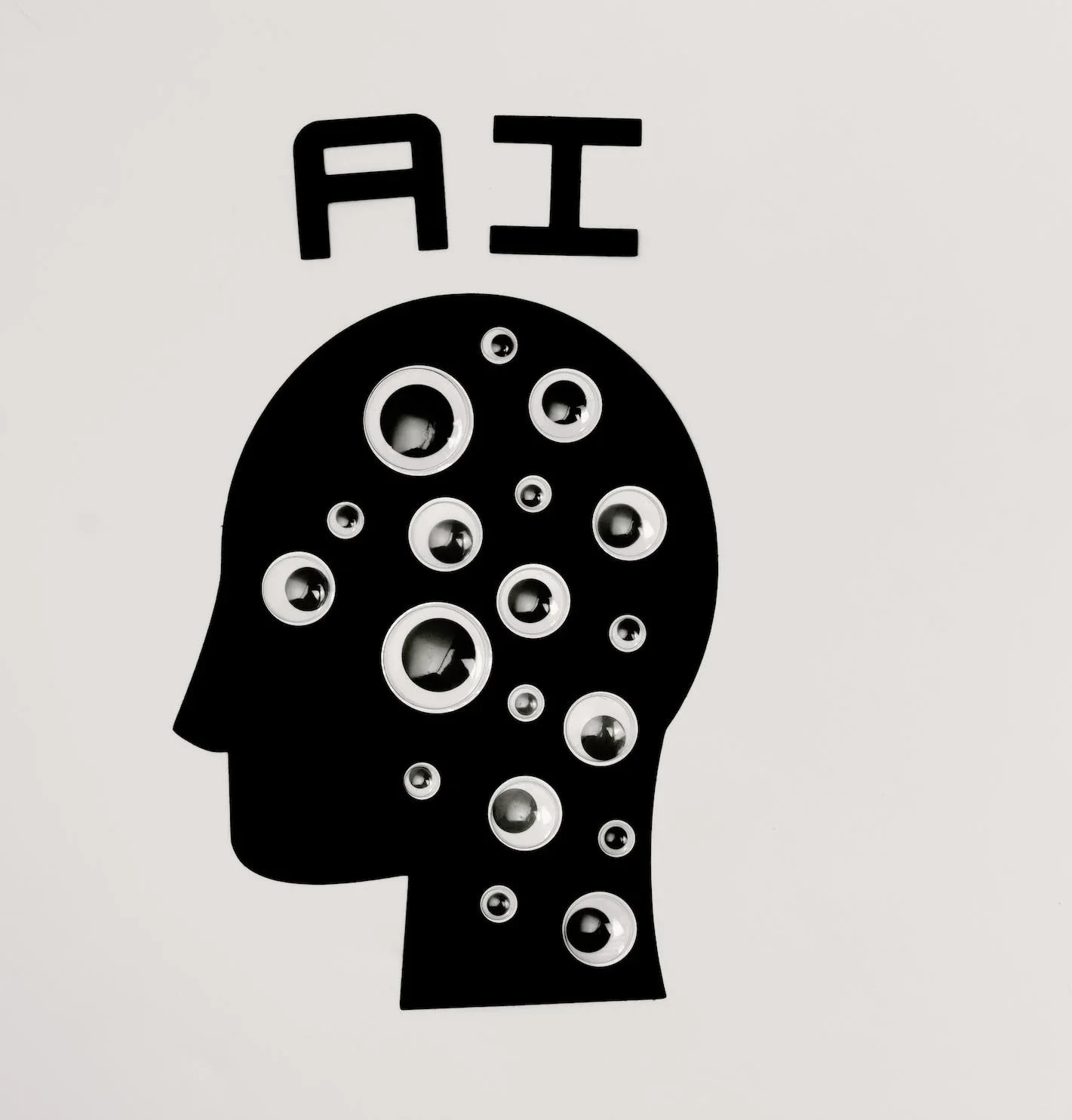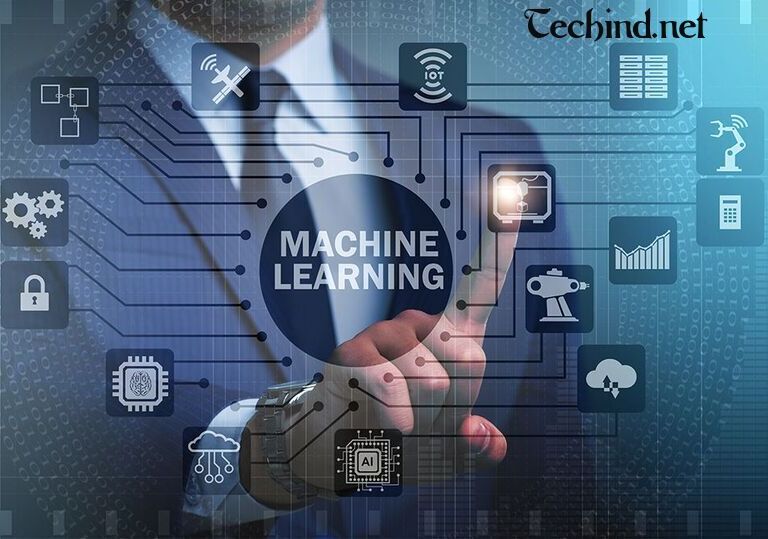Technology is constantly evolving and changing the way we live, work and interact with one another. In recent years, there have been many new technologies that are emerging and transforming various industries. In this blog post, we will discuss the top 10 new trending technologies that are shaping the future.
Top 10 New Trending Technologies
1. Artificial Intelligence (AI)
Artificial Intelligence (AI) is a technology that enables machines to learn from experience and perform tasks that usually require human intelligence, such as visual perception, speech recognition, decision-making and language translation. AI is already being used in various industries, including healthcare, finance and retail.

Artificial Intelligence (AI) refers to the simulation of human intelligence in machines that are programmed to think and learn like humans. It involves the development of computer algorithms that can make decisions and predictions based on large amounts of data. AI is used in a variety of applications, including natural language processing, image and speech recognition, and autonomous machines such as self-driving cars.
Benefits of Artificial Intelligence
Artificial Intelligence (AI) has numerous benefits across various industries. Some of the major benefits include:
- Improved Efficiency: AI can automate routine and repetitive tasks, freeing up time for employees to focus on more complex and creative tasks.
- Enhanced Accuracy: AI algorithms can process vast amounts of data and identify patterns that may not be apparent to humans, leading to more accurate predictions and decisions.
- Cost Savings: By automating tasks and reducing the need for human labor, AI can help companies save on costs and increase profitability.
- Personalization: AI can be used to create personalized experiences for customers, such as targeted advertising and product recommendations.
- Improved Safety: AI can be used to detect and prevent potential safety hazards, such as identifying defects in manufacturing processes or detecting fraudulent activity.
Overall, AI has the potential to revolutionize various industries and improve our daily lives in many ways.
2. Blockchain
Blockchain is a decentralized and secure digital ledger that records transactions in a transparent and immutable way. It eliminates the need for intermediaries, reduces costs and increases efficiency. Blockchain is being used in various industries, including banking, supply chain management, and real estate.
Benefits of Blockchain
Blockchain technology offers several advantages, including:
- Decentralization: Unlike traditional systems, blockchain is a decentralized system, meaning that it is not controlled by a single entity. This allows for greater transparency and security.
- Immutability: Once information is recorded on the blockchain, it cannot be altered or deleted. This makes it an ideal platform for recording important data that needs to be tamper-proof.
- Cost-effective: Blockchain can reduce costs by eliminating the need for intermediaries, such as banks or other financial institutions.
- Efficiency: Blockchain can streamline processes by allowing for real-time verification and validation of transactions.
- Increased security: Blockchain is highly secure due to its cryptographic nature and decentralized architecture.
Overall, blockchain has the potential to revolutionize various industries by providing a more secure, transparent, and efficient way of recording and verifying information and transactions.
3. Internet of Things (IoT)
Internet of Things (IoT) is a network of connected devices that can communicate and exchange data with each other without human intervention.
Benefits of Internet of Things
- Improved decision making and efficiency
- Increased productivity
- Enhanced safety and security
- Improved customer experience
- Reduced costs through automation and optimization
4. Augmented Reality (AR)
Augmented Reality (AR) is a technology that enhances the real-world environment by overlaying digital information, such as images, videos and 3D models. AR is being used in various industries, including gaming, education and marketing.

Benefits of Augmented Reality
- Enhances learning experiences by making them more interactive and engaging
- Provides virtual training opportunities that are more cost-effective than physical training
- Enables remote collaboration and communication by providing a shared augmented reality space
- Improves customer experiences by allowing them to visualize products in their own environment before purchasing
5. Robotics
Robotics is a technology that involves the design, construction, and operation of robots. Robots can perform various tasks, including manufacturing, assembly, and transportation. Robotics is being used in various industries, including healthcare, agriculture and manufacturing.
Benefits of Robotics
Robotics technology has been making great strides in recent years, leading to a wide range of applications in various industries. Here are some of the key benefits of robotics:
- Increased efficiency: Robots can work around the clock without getting tired or needing breaks, which can significantly increase productivity and efficiency.
- Improved safety: Robots can be used to perform tasks that are dangerous or hazardous for humans, such as working in extreme temperatures or handling hazardous materials.
- Reduced costs: While the upfront costs of implementing robotics technology can be high, in the long run, it can help reduce costs by increasing efficiency and reducing the need for manual labor.
- Increased accuracy: Robots can perform tasks with great precision, which can be particularly useful in industries such as manufacturing or healthcare.
Overall, robotics technology has the potential to revolutionize many industries and improve our lives in a variety of ways.
6. 5G Technology
5G Technology is the next generation of mobile communication technology that promises faster download and upload speeds, better connectivity and lower latency. 5G Technology is being used in various industries, including transportation, entertainment and healthcare.
Benefits of 5G Technology
5G technology offers a number of benefits over previous generations of wireless technology. Some of the key benefits include:
- Faster speeds: 5G networks are capable of delivering data at speeds up to 100 times faster than 4G networks, allowing for faster downloads and uploads.
- Lower latency: With latency as low as one millisecond, 5G networks can support applications that require real-time communication, such as remote surgery and autonomous vehicles.
- Greater capacity: 5G networks can support more devices per square kilometer than previous generations, making it possible to connect more devices in crowded areas.
- Improved reliability: 5G networks use advanced technologies such as beamforming and network slicing to improve reliability and ensure that devices stay connected even in areas with weak signals.
7. Edge Computing
Edge Computing is a technology that processes data at the edge of the network, closer to the source of the data. It reduces latency, improves security and increases efficiency. Edge Computing is being used in various industries, including manufacturing, transportation and healthcare.
Benefits of Edge Computing
Some of the benefits of edge computing include:
- Reduced latency: By processing data closer to the source, edge computing reduces the time it takes for data to travel to and from the cloud, resulting in faster response times.
- Improved reliability: Edge computing reduces the risk of application failure by enabling applications to continue running even when connectivity to the cloud is lost.
- Increased efficiency: By processing data locally, edge computing reduces the amount of data that needs to be transmitted to the cloud, thereby reducing bandwidth requirements and cost.
- Improved security: Edge computing provides an additional layer of security by enabling data to be processed locally, reducing the risk of sensitive data being intercepted during transmission to the cloud.
Overall, edge computing is a promising technology that has the potential to transform the way we think about computing and data processing.
8. Quantum Computing
Quantum Computing is a technology that uses quantum-mechanical phenomena, such as superposition and entanglement, to perform operations on data. It promises to solve complex problems that are beyond the capabilities of traditional computers. Quantum Computing is being used in various industries, including finance, healthcare and logistics.
Benefits of Quantum Computing
Quantum computing has several potential benefits, including:
- Increased computing power: Quantum computers can perform certain calculations much faster than classical computers, which could lead to significant advancements in fields such as cryptography, drug discovery, and materials science.
- Improved machine learning: Quantum computing can help improve machine learning algorithms, allowing for more accurate and efficient data analysis.
- Better simulations: Quantum computers can simulate complex systems that are difficult or impossible to simulate with classical computers, such as chemical reactions or weather patterns.
- Faster optimization: Quantum computing can help optimize complex systems, such as traffic flow or financial portfolios, more quickly and accurately than classical computers.
9. Cybersecurity
Cybersecurity is a technology that protects computer systems and networks from unauthorized access, attacks, and theft of data. Cybersecurity is becoming increasingly important as more businesses and individuals rely on technology to store and share sensitive information.

Benefits of Cybersecurity
- Protects against unauthorized access to sensitive information
- Helps prevent financial loss due to cyber attacks
- Increases customer confidence and trust in your organization
- Helps maintain the integrity and availability of systems and data
- Helps comply with regulatory requirements and standards
10. Biometrics
Biometrics is a technology that uses biological characteristics, such as fingerprints, facial recognition and iris scans, to identify individuals.
Benefits of Biometrics
Biometrics is a technology that uses human characteristics to identify a person. This technology has a number of benefits, including:
- Increased security: Biometrics can be used to prevent unauthorized access to sensitive areas or information. It is much more difficult to fake biometric data than it is to steal a password or ID card.
- Convenience: Biometrics can make access to secure areas or information much more convenient for authorized individuals. They do not need to remember passwords or carry around ID cards.
- Accuracy: Biometric data is unique to each individual, which means that it is much more accurate than other forms of identification. This can help to reduce errors and prevent fraud.
- Efficiency: Biometric systems can be used to quickly and accurately identify individuals, which can help to streamline processes and reduce wait times.
Overall, biometrics is a powerful technology that has the potential to improve security, convenience, accuracy, and efficiency in a wide range of settings.
Conclusion:
These top 10 new trending technologies are just the tip of the iceberg. With technology evolving at an ever-increasing pace, we can expect many more new and exciting technologies to emerge in the near future. It is important for businesses and individuals to stay up-to-date with these trends to remain competitive and relevant in this rapidly changing world.
![Error [pii_email_4dd09cddea0cd66b5592] with Outlook- Solutions that Will Work](https://techind.net/wp-content/uploads/2024/01/Error-pii_email_4dd09cddea0cd66b5592-with-Outlook-Solutions-that-Will-Work.png)

